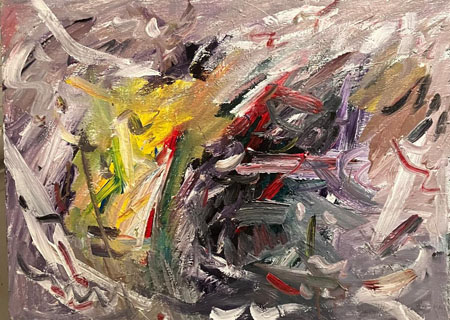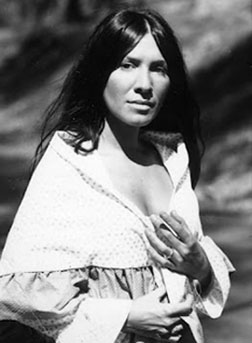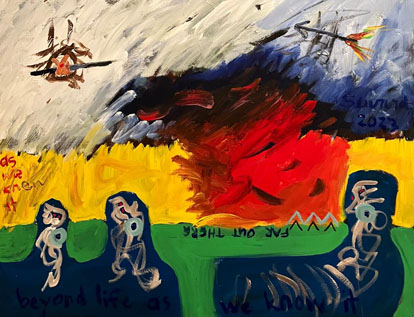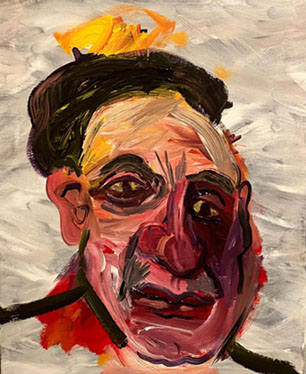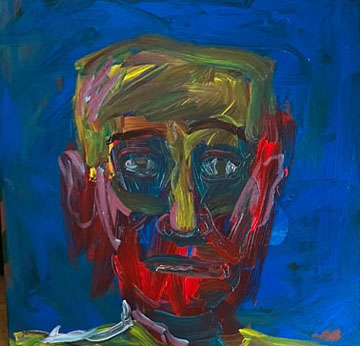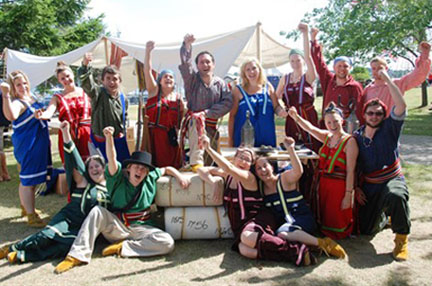Buffy Sainte-Marie and “the complex and growing debate around Indigenous identity in Canada”
Nov 1st, 2023 | By Counterweights Editors | Category: In BriefCOUNTERWEIGHTS EDITORS, GANATSEKWYAGON, ON. WEDNESDAY, NOVEMBER 1, 2023. Well, to start with, Happy Day After Halloween 2023. Which may or may not be a good time to at least start trying to contemplate the latest news about “singer-songwriter, musician and social activist” Buffy Sainte-Marie. (Whose first big hit single was “Until It’s Time For You To Go” in 1965 — covered among others by Elvis in 1972.)
The news in question is summarized in the title of an October 27 CBC News article by Geoff Leo, Roxanna Woloshyn and Linda Guerriero : “Who is the real Buffy Sainte-Marie? … claims to Indigenous ancestry are being contradicted by members of the iconic singer-songwriter’s own family and an extensive CBC investigation.”
One immediate reaction we’ve heard from several quarters is just a weariness with the recurrent news that this or that celebrity who was supposed to be an Indigenous person in Canada (or the United States and so forth) is not in fact an Indigenous person by birth. (Or in the old lexicon by blood, as in “blood is thicker than water.”)
On this reasoning what counts in Buffy Sainte-Marie’s case is just that she wrote some inspiring songs, covered by more than a few other popular singers. And whatever else even the latest CBC News article concedes that Ms. Sainte-Marie was adopted “by Emile and Clara Piapot … of the Piapot First Nation,” a Cree reserve northeast of Regina, Saskatchewan.
First thoughts
Our own thoughts on all this turn around another passage from the October 27 CBC article : Buffy Sainte-Marie “is the latest high-profile public figure whose ancestry story has been contradicted by genealogical documentation, including her own birth certificate, historical research and personal accounts — the latest chapter in the complex and growing debate around Indigenous identity in Canada.”
The same complex and growing debate also figures in another recent CBC News article : Brett Forester’s “Assembly of First Nations endorses fight against Ontario Métis self-government bill … Undaunted by protests, Métis Nation of Ontario marks anniversary of landmark legal win.”
By the same author see as well : “Ontario First Nations chiefs protest federal Métis self-government bill … Métis Nation of Ontario responds by accusing chiefs of ‘Métis denialism’” ; and “Judge questions First Nations’ right to challenge Ontario Métis self government … ‘Where does your client get the authority?’ judge asks lawyers for First Nations group.”
(Similarly, note here that section 35 of the Constitution Act, 1982 prescribes : “(1) The existing aboriginal and treaty rights of the aboriginal peoples of Canada are hereby recognized and affirmed … (2) In this Act, aboriginal peoples of Canada includes the Indian, Inuit and Métis peoples of Canada.” And note too that since 1982 many Canadians have come to say “Indigenous” instead of “Aboriginal” and “First Nations” instead of “Indian.” But the law of the land remains what section 35 prescribes.)
Struggling with the issue
Part of our struggle with this broad issue — with “the complex and growing debate around Indigenous identity in Canada” — is suggested in some recent writing from our colleague Randall White : “in all cases after confederation all prior Canadian obligations of the British Crown were ultimately assumed by the new Canadian federal government, which was responsible for “Indians, and Lands reserved for the Indians” under section 91(24) of the Constitution Act, 1867.”
Mr. White goes on : “Ottawa’s approach to these obligations was traditionally frugal, and it applied only to ‘registered’ or ‘status’ Indians broadly under the terms of the 1876 Indian Act. This is why Statistics Canada still distinguishes ‘Registered or Treaty Indians’ from ‘Total Indigenous population’ [as self-reported by Canadians themselves] … Similarly again, according to the October 2021 Statistics Canada projections : ‘The population of Indigenous identity was estimated at 1.8 million in 2016 … it could reach between 2.5 million and 3.2 million in 2041.’” Moreover : “‘The Registered Indian population was estimated at 910,000 in 2016 [just half the Total Indigenous population] … it could reach between 1.1 million and 1.4 million in 2041 … It is another challenge of Indigenous policy in Canada today that it remains largely focused on the Registered Indian population and, still more particularly, on the more than 600 reserves across the country where this population at least used to be concentrated.’”
More fundamentally, the question the Buffy Sainte-Marie and related controversies finally raises for us focuses on just what “Canada” (an Iroquoian word by most accounts) means in the 21st century? Is Canada today a multicultural and multiracial political community that starts with the ultimately transcontinental “Indigenous and European” fur trade in the 16th and 17th centuries — in the spirit of Harold Innis’s conclusion of 1930 when his now classic book on The Fur Trade in Canada was first published : “We have not yet realized that the Indian and his culture were fundamental to the growth of Canadian institutions”?
Or is Canada today a collection of more traditional “biological” or “genealogical” communities (so to speak) — defined in the old lexicon by “blood” relations, open to recurrent narrow genealogical challenges, as in the case of Buffy Sainte-Marie or the Ontario Métis? (Though the Ontario Métis quest for the same kind of reserve “self-government” as First Nations does in some degree also flow from some kind of essentially genealogical argument.)
Our firm conviction
For whatever it may or may not be worth, our firm conviction lies with the first alternative. Canada today is a multicultural and multiracial political community that starts with the ultimately transcontinental “Indigenous and European” fur trade in the 16th and 17th centuries.
Modern Canada (an Indigenous word) has its origins in the much-more-to-be-honoured-than-now First Nations (and Inuit) peoples. And it goes on to include successive waves of cultural (and racial) partners, finally from all regions of an increasingly interconnected global village.
Like everyone else, we’re far from at all clear on just what this means for present and future Canadian public policy. It is something that requires much more democratic public discussion in the complex and growing debate around Indigenous identity in Canada.
But, eg, the status of First Nations in Canada needs to be discussed in tandem with the status of the many new citizens of Canada today from literally all parts of the world. “Sovereignty” is not finally a question of genealogy in the most northern regions of North America in the 21st century.
